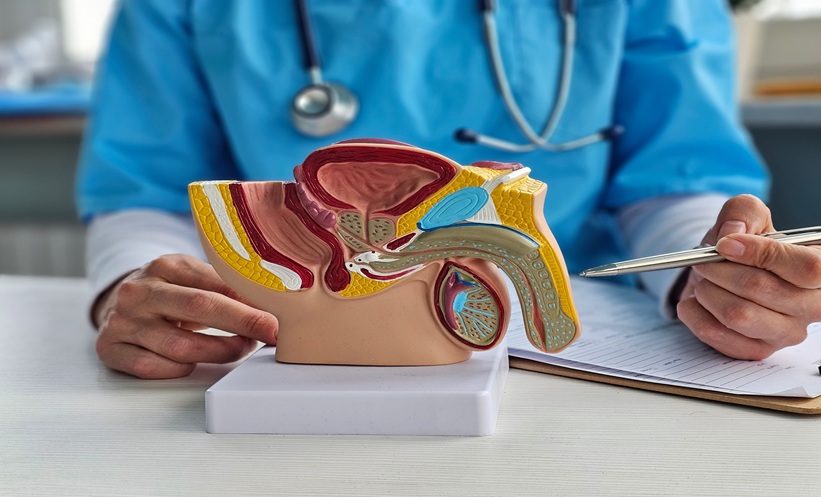A NEW study has identified a composite index combining prostate-specific antigen (PSA) levels with MRI-derived measurements of periprostatic adipose tissue (PPAT) that could improve screening accuracy for high-grade prostate cancer (PCa).
Researchers retrospectively analyzed clinical, imaging, and pathological data from 215 patients who underwent prostate MRI between January 2020 and January 2023. Two radiologists quantified several PPAT metrics, including periprostatic fat area (PPFA), its ratio to prostate area (PPFA/PA), and other fat volume and thickness measures. These values were evaluated alongside PSA and prostate-specific antigen density (PSAD) to determine their predictive power.
The study found that PPFA/PA and PSA levels were independent predictors of high-grade PCa. When combined into a single index—PSA × PPFA/PA—the model demonstrated superior diagnostic performance, achieving an area under the ROC curve (AUC) of 0.818, higher than PSA or PSAD alone.
The optimal cutoff value for this composite index was 42.135, offering clinicians a potential tool for more precise risk stratification. The authors suggest that integrating PPAT measurements with PSA testing could enhance early detection and help guide clinical decision-making, potentially reducing unnecessary biopsies in lower-risk patients while ensuring timely intervention for those at higher risk.
Reference
Xiong J et al. A novel composite index of PSA and periprostatic adipose tissue quantification for enhancing high-grade prostate cancer prediction. BMC Urol. 2025;DOI: 10.1186/s12894-025-01884-7.







